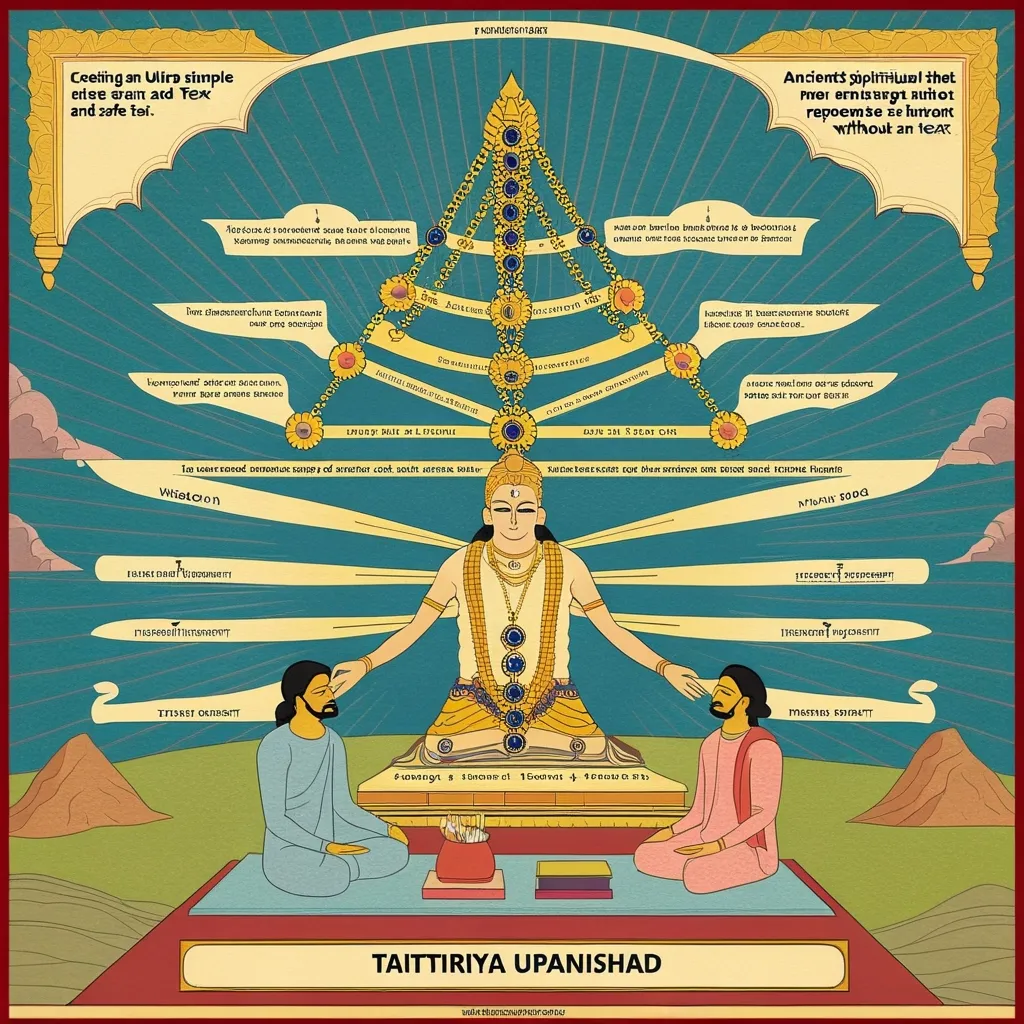The Taittiriya Upanishad, part of the Krishna Yajur Veda, stands tall as one of the cornerstone texts in Hindu philosophy. With its origins tracing back to ancient times, this Upanishad offers a treasury of spiritual wisdom divided into three main sections: the Siksha Valli, the Brahmananda Valli, and the Bhrigu Valli. Each section is a step on the ladder of spiritual growth, addressing different facets of truth and knowledge that are relevant even today.
Kicking things off, the Siksha Valli is like the primer or introductory chapter. It’s where the groundwork is laid, focusing on the disciplines and rituals needed to prep the mind for higher wisdom. It all starts with an invocation, a kind of peace mantra asking various deities for blessings. The idea is to smooth out any bumps on the road of spiritual pursuit. It’s a mantra that nudges you to look both inward and outward, aiming for harmony and truth in every slice of life.
One of the standout teachings in this section is the art of Vedic chanting, known as Sheeksha. At first glance, it might seem like chanting is just about saying the words, but it is so much more than that. The practice involves getting the pronunciation just right—nailing the letters, accents, quantities, rhythm, and sequence—all of which serve to meditate on the deeper meanings of these chants. This meticulous practice not only purifies the mind but also helps it focus.
The Siksha Valli also spotlights meditation and contemplation, pushing you to meditate on elements like the universe, light, knowledge, progeny, and language. These meditations are referred to as the “Great Word Junctions” or Samhitas. They’re all about understanding the union of different life aspects. One such meditation has you contemplating the universe in layers—earth below, heaven above, air in between, and wind stitching it all together. This holistic approach helps you see how interconnected everything is.
A significant slice of this first section is dedicated to the prayer shared by the teacher and student. It’s a mutual aspiration for fame, wisdom, and spiritual pre-eminence. This prayer underscores the vital teacher-student relationship in the quest for knowledge. Here, the teacher isn’t just a dispenser of knowledge but a guide lighting the spiritual path for the student.
Next up is the Brahmananda Valli, diving deep into the nature of Brahman, the ultimate reality. Brahman is depicted as Truth, Knowledge, and Infinity. Knowing Brahman as being right within the heart lets you realize all your desires almost instantly. This section spells out the order of creation, going from the ether to the physical world, showing how everything is interconnected and part of Brahman.
Then we have the Bhrigu Valli, which tells the story of Bhrigu, the son of Varuna. Through penance, Bhrigu understood the bliss of Brahman. This segment details the five sheaths or kosas that enclose the Self: physical, vital, mental, intellectual, and blissful. Understanding these sheaths leads to comprehending the true nature of the Self and eventually achieving liberation.
The Taittiriya Upanishad makes it crystal clear that the highest good comes from knowledge rather than from mere actions. Atman, or knowledge of the self, is the key to liberation. While performing works (karma) is necessary, it’s mostly to prep the mind for receiving this knowledge. The Upanishad teaches that just gathering knowledge isn’t enough. One must act on it since only knowledge can bring true liberation.
While emphasizing the primacy of knowledge, the Upanishad doesn’t dismiss the role of works in spiritual growth. Actions help wipe out accumulated sins and clear obstacles that might prevent wisdom from blossoming. However, these actions should be seen as tools, not the end goal. The ultimate aim is to find one’s true Self, a state beyond desires and attachments.
The theme of unity flows strongly through the Taittiriya Upanishad. It teaches that Brahman is the ultimate reality that underpins everything. Recognizing this unity helps transcend the divide between the individual self (jiva) and the universe (jagat). This realization can bring a profound sense of peace and lead to liberation.
What’s especially cool about the Taittiriya Upanishad is that its teachings aren’t just abstract or theoretical. They have practical applications in daily life. The Upanishad lays down guidelines for right conduct and character building, stressing the importance of living a life grounded in virtue, thoughtfulness, religious dedication, and devotion to Dharma. These principles aim to create a harmonious, balanced life that supports spiritual growth.
In essence, the Taittiriya Upanishad serves as a thorough guide to spiritual growth and self-realization. It seamlessly combines the disciplines of rituals and meditation with the higher knowledge of Brahman. By following its teachings, you can gain deeper insights into the universe and the Self, paving the way for a life filled with peace, harmony, and ultimate liberation. The Upanishad’s focus on knowledge, unity, and ethical conduct make it a timeless and universal text that continues to inspire seekers of truth and wisdom.






